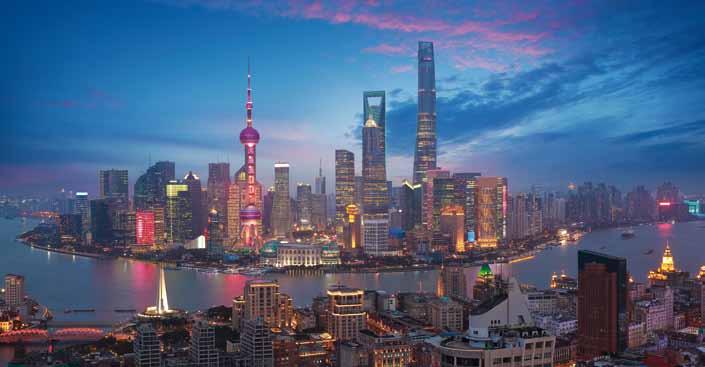
28 minute read
LNG2019 takes place in a landmark year for the industry
by IGU
LNG2019 takes place in a landmark year for t he in dust ry
LNG2019 will be the biggest gas event of the year with 11,000 people expected to attend the 19th edition of the triennial conference and exhibition being held this time in Shanghai. By Mark Blacklock
The LNG industry is converging on Shanghai in what is set to be a landmark year with 36 mt of new production capacity coming onstream and final investment decisions (FIDs) likely on up to 60 mt of capacity.
The surge in new investment follows a relative drought between LNG18 in April 2016 and September 2018 when projects totalling just 16.93 mt reached FID. The tide began to turn with the go-ahead for LNG Canada in October (14 mt) and Greater Tortue Ahmeyim LNG in December (2.4 mt). In addition, the laid-up Caribbean FLNG (0.5 mtpa) was signed to a customer in November. Driving the optimism is strong demand – not least from LNG2019 host country China – and IGU’s latest World LNG Report, to be launched at LNG2019, shows that for the fifth consecutive year global LNG trade set a record, increasing 9.8% in 2018 to reach 316.5 mt.
Demand growing and evolving Asia and Asia-Pacific
China’s Energy Revolution strategy (see pages 28-36) maps out a growing share for natural gas in the energy mix
The LNG industry is converging on Shanghai for LNG2019.
to help improve air quality and meet the country’s commitments under the Paris Climate Change Agreement. Demand has been outstripping the growth in domestic production and existing international pipeline links so LNG has taken the strain, with imports doubling between 2016 and 2018 to 54.8 mt. Indeed, LNG met 26% of China’s gas demand in 2018.
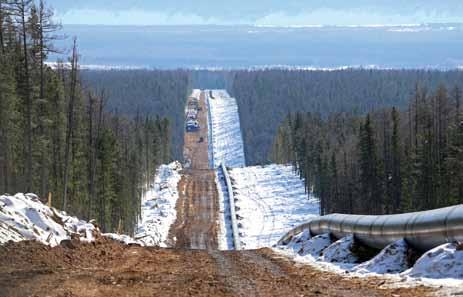
Australia, where CNOOC and Sinopec have made upstream investments, is China’s largest supplier of LNG followed by Qatar. With Qatar evaluating international partners for its expansion of capacity, it will be interesting to see if Chinese companies invest there. A growth in supplies from Russia is underpinned by the shareholdings of CNPC and the Silk Road
LNG capacity scheduled to start up in 2019
Project Prelude FLNG Country Australia Capacity 3.6
Sengkang LNG Cryogas-Vysotsk Portovaya LNG Cameron LNG Corpus Christi LNG Elba Island LNG Freeport LNG Sabine Pass LNG
Total
Indonesia
Russia Russia USA Louisiana
USA Texas USA Georgia USA Texas
USA Louisiana 0.5
0.33 1.5 13.5
4.5 2.5 5.1
4.5
36.03
Comments Also produces 1.3 mtpa of condensate and 0.4 mtpa of LPG Train 1
Train 1
Trains 1-3
Train 2 Trains 1-10 Train 1
Train 5 z Due to enter service in December, the Power of Siberia pipeline from Russia to China will have a temporary impact on China’s LNG imports. Fund in Yamal LNG. US supplies were set to grow but have been impacted by the USA-China trade dispute and it remains to be seen how this will be resolved. The two countries have been imposing new tariffs on each other’s products including 10% on US LNG imports into China since September 2018.
The growth of China’s LNG imports will slow from December when the Power of Siberia pipeline connection with Russia is due to enter service, but this is likely to be temporary. Once the new capacity is absorbed the growth rate will resume and China will take over from Japan as the world’s top importer.
In Japan a slower than expected rate of nuclear reactor restarts means that LNG demand is likely to be relatively stable in the 80-84 mt range rather than declining significantly in the medium term.
Nuclear shut-downs have also boosted Korea’s LNG imports, which reached a record 44.5 mt in 2018.
China, Korea and Japan together account for around 57% of global LNG demand. Adding in the other Asian importers – newcomer Bangladesh, fourth largest importer India, Malaysia (medium-scale alongside its role as an exporter), Pakistan, Singapore, Taiwan and Thailand – brings the share to over 70%.
Bangladesh joined the ranks of LNG importers in August 2018. Petrobangla has contracted with Excelerate Energy to use the floating storage and regasi
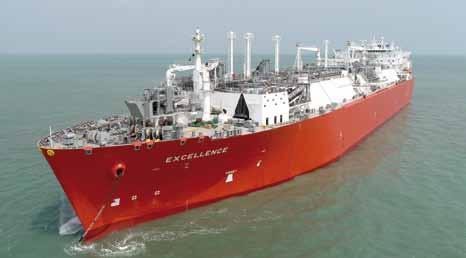
Bangladesh joined the ranks of LNG importers in August 2018 using the FSRU Excellence.
fication unit (FSRU) Excellence with an annual capacity of 3.8 mtpa. The vessel is located offshore Moheshkhali Island in the Bay of Bengal. Excelerate is supplying a second FSRU to Bangladesh for Summit Energy’s LNG import project and associated 3 GW combined-cycle power plant.
Meanwhile, in the Philippines the delayed Pagbilao LNG project could enter service in the second half of 2019. Energy World Corporation is building a 3 mtpa regasification terminal and 650 MW combined cycle power plant on Pagbilao Grande Island in Quezon Province.
Looking ahead will see Australia, the world’s number two LNG exporter in 2018, becoming an importer as well. A gas shortage is looming in the east of the country where 25.3 mtpa of export capacity competes with domestic demand. There are import proposals for FSRUs in Crib Point, Newcastle, Port Adelaide, Port Kembla and an as yet unannounced port in Victoria. Only one or at most two are likely to get the go-ahead with start-up in late 2020 or 2021.
Africa and the Middle East
In Africa and the Middle East, the reverse has happened with the large resources of Egypt’s Zohr field yielding an abundance of gas which has ended the country’s period as an LNG importer (2015-2018) and will provide new feedstock for the country’s two liquefaction plants. New domestic resources have also transformed Israel’s gas industry, while Jordan is likely to reduce if not end LNG imports with good potential for regional pipeline supplies.
The loss of this LNG demand will be more than made up by new Middle Eastern markets in Bahrain and Sharjah together with expansion of Kuwait’s capacity, and a new African market in Ghana.
Bahrain LNG, a joint venture of the country’s National Oil and Gas Authority, Teekay LNG, Samsung C&T and the Gulf Investment Corporation, has developed a 6 mtpa facility with a jetty and breakwater 4.3 km offshore to receive LNG shipments, as well as a floating storage unit (FSU Bahrain Spirit) and a regasification platform. Operations were due to start at presstime.
In Sharjah, UAE, the Sharjah National Oil Corporation and Uniper are targeting 2020 for their 7.5 mtpa LNG import facility using an FSRU offshore Hamriyah Port.
Meanwhile, Kuwait, which has been chartering FSRUs since 2009, will upgrade to what will eventually be a 22 mtpa onshore facility. This is being developed by Kuwait National Petroleum Company at Al Zour and the first phase is planned for a 2021 start-up.
In Ghana, where additional gas supplies are needed to supplement domestic production and pipeline imports from Nigeria, Tema LNG is working on a 2 mtpa project using a barge-based regasification unit in tandem with an FSU in the Port of Tema. The project has been delayed but start-up is now envisaged in 2020.
Europe
In Europe, Malta joined the ranks of LNG importers in January 2017 with a small-scale 0.4 mtpa facility to serve a new 215 MW power plant and an existing 149 MW plant at Delimara. The new power plant and LNG terminal, which comprises an onshore regasification plant and an FSU in Marsaxlokk Bay,
are operated by ElectroGas Malta (a consortium of GEM Holdings, Siemens and Socar). The FSU is Bumi Armada’s Armada LNG Mediterrana.
Gibraltar too has built a gas-fired power plant (80 MW) and a small-scale LNG import terminal. The latter is operated by Shell subsidiary Gasnor and is an onshore facility with five commissioning cargo was received in January 2019.
Elsewhere, the development of new LNG import facilities is being driven by security of supply concerns. Like Lithuania and Poland before them, neither Croatia nor Russia’s Baltic enclave of Kaliningrad want to rely solely on pipeline supplies. Gazprom’s 2.7 mtpa terminal in Kaliningrad using the FSRU Marshal Vasilevskiy moored at a berth 5 km offshore was inaugurated in January. Croatia is targeting October 2020 for the start-up of LNG Hrvatska at Krk using the FSRU Golar Viking with a capacity of 1.9 mtpa. Ireland too is considering a 3 mtpa project – Shannon LNG – at Ballylongford.
And Germany, which was looking at importing LNG in the 1970s but did not proceed (although it did host LNG5 in Düsseldorf in 1977), is considering several new proposals to supplement its pipeline imports.
Uniper wants to station an FSRU chartered from MOL in Wilhelmshaven with a capacity of 7.4 mtpa and startup envisaged in 2022. Interestingly, Uniper is also looking at shipping LNG to the Gate terminal in Rotterdam, the Netherlands, for regasification and import to Germany by pipeline.
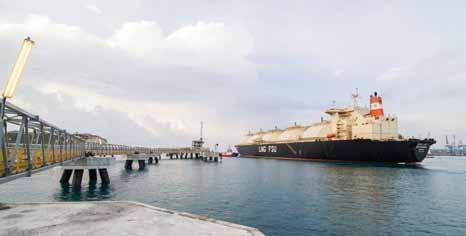
There are two rival proposals on the River Elbe at Brunsbüttel for the 3.7 mtpa German LNG Terminal promoted by Gasunie, Oiltanking and Vopak, and at Stade for the 5.9 mtpa LNG Stade promoted by China Harbour Engineer
Malta started LNG imports in January 2017 using the FSU Armada LNG Mediterrana.
1,000 m3 storage tanks. The first
ing Company and Macquarie Group.
At the other end of the scale, Fluxys and Novatek are evaluating a 0.3 mtpa LNG trans-shipment terminal in Rostock.
Meanwhile, Turkey inaugurated its fourth LNG import terminal at Dörtyol in February 2018. BOTAŞ has a shortterm contract for the world’s largest FSRU, MOL FSRU Challenger, which has a storage capacity of 263,000 m3 and a
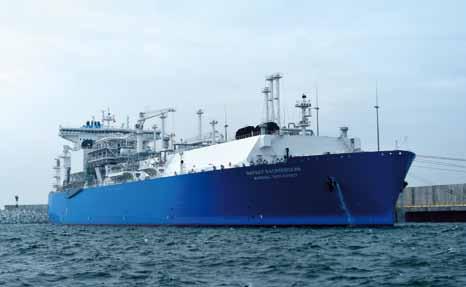
Kaliningrad’s import terminal using the FSRU Marshal Vasilevskiy (above) was inaugurated in January by President Putin and the Chairman of Gazprom’s Management Committee, Alexey Miller (inset).
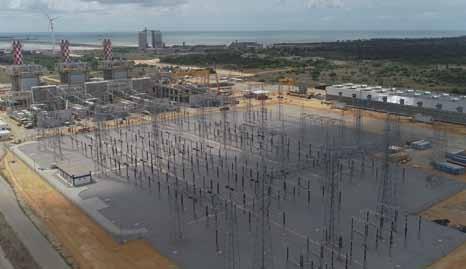
This 1.5 GW gas-fired power plant being built by Centrais Elétricas de Sergipe, a joint venture of Golar Power and Ebrasil, will bolster Brazil’s LNG imports.
regasification capacity of 6 mtpa. The vessel was originally destined for a project in Uruguay.
Latin America and the Caribbean
The Latin America and Caribbean region is seeing a restructuring of demand with the displacement of LNG from Argentina and Mexico and the development of new markets.
The exploitation of unconventional resources is leading to a new abundance of gas in Argentina. The contract with Excelerate Energy for one of the country’s two FSRUs for LNG imports, Exemplar in Bahía Blanca, ended in October 2018, the same month that pipeline exports restarted to Chile. Instead, Bahía Blanca will host a small LNG export project (see below). However, Argentina has particularly sharp fluctuations in gas demand between summer and winter and one FSRU, Excelerate’s Expedient, will remain in Escobar to help out with the winter peak.
Argentina’s restart of pipeline supplies will put the brake on proposals to increase Chile’s LNG import capacity, while Uruguay’s LNG project has been suspended.
Over in Brazil, LNG demand is impacted by fluctuations in hydropower output. Indeed, Petrobras brought forward the end of its contract for the FSRU Golar Spirit based in Guanabara Bay from August 2018 to June 2017. However, a new import terminal serving a 1.5 GW power plant is set to enter service in Sergipe in 2020 as a joint venture between Golar Power (itself a joint venture of Golar LNG and Stonepeak Infrastructure Partners) and Ebrasil. The project will use the Golar Nanook FSRU with a capacity of 5.5 mtpa. This will be followed by a further new terminal and two power plants at Açu promoted by Prumo Logística. BW LNG will supply the FSRU with a capacity of 5.6 mtpa. The first 1.3 GW power plant is due to start up in 2021 and the second 1.7 GW facility in 2023.
Mexico is expanding its pipeline links with the USA and, while there is a project for a new LNG import terminal in the southern part of Baja California which lacks gas infrastructure, overall LNG imports will fall. There is a project to convert one of the country’s existing three import terminals, Costa Azul, to an export facility (see below).
Meanwhile, Colombia’s LNG imports started in December 2016 using the FSRU Höegh Grace in Cartagena on the country’s Caribbean coast to meet the gap between increasing gas demand and domestic production. The terminal, with a capacity of 3 mtpa, is operated by Sociedad Portuaria El Cayao, a joint venture of Promigas and Baru LNG. A second 3 mtpa FSRU is proposed for the Pacific coast in the Bay of Buenaventura with an envisaged start-up in 2022.
In the Caribbean, the Dominican Republic and Puerto Rico are longstanding medium-scale LNG importers and were joined by Jamaica in 2016. The country’s electricity utility, Jamaica Public Service (JPS), contracted with New Fortress Energy (NFE) to supply gas to replace fuel oil at the 120 MW Bogue power plant in Montego Bay. The supply chain involved an FSU, a shuttle tanker and an onshore regasification plant. JPS and NFE are now expanding the use of gas and have replaced the FSU with an FSRU. Golar Freeze, with a capacity of 3.6 mtpa, was stationed at Port Esquivel at the end of
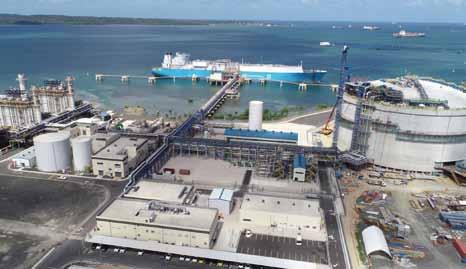
Panama’s Costa Norte LNG import terminal received its commissioning cargo in June 2018 and the anchor power plant started up in September.
2018 and, in addition to Bogue, will supply a 190 MW power plant due to start up at Old Harbour Bay in June and a 94 MW power plant being built for the Jamalco bauxite company in Clarendon.
And LNG has found new markets in Central America with Panama receiving its commissioning cargo in June 2018 and El Salvador set to start imports in 2021.
Panama’s Costa Norte project is a joint venture between AES Panama and Inversiones Bahia. A 381 MW power plant is the anchor customer for an onshore regasification terminal with a capacity of 1.5 mtpa at Isla Telfers, Colón. The terminal has been designed to make small-scale deliveries to a range of other customers, which are due to start later this year.
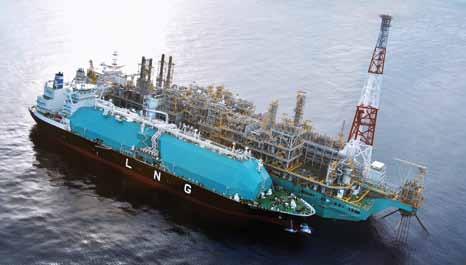
The world’s first operational floating liquefaction plant, the purpose-built PFLNG Satu, shipped its inaugural cargo in April 2017.
El Salvador has taken the FSRU route for its 355 MW gas-to-power project in Acajutla promoted by Energía del Pacífico, which is backed by Invenergy and Quantum Energy. BW LNG will supply the FSRU.
New supply capacity Asia-Pacific
On the supply side, Australia was due to complete its massive programme of investment at presstime with the startup of LNG exports from the FLNG Prelude. This brings the country’s nameplate capacity to 87.6 mtpa, taking the crown from Qatar. Of this 40.2 mtpa has been brought online since LNG18 in Perth in April 2016, a major achievement despite significant cost over-runs.
Elsewhere in the region, the honours for the world’s first operational floating liquefaction plant went to Malaysia and Petronas. (Prelude, led by Shell with INPEX, KOGAS and CPC as partners, was the first to be launched.) PFLNG Satu shipped its inaugural cargo in April 2017. It has a production capacity of 1.2 mtpa and is moored above the Kanowit field, 180 km offshore Bintulu. The slightly larger (1.5 mtpa) PFLNG Dua is set to enter service in 2020 and is destined for the Rotan field, 240 km offshore Kota Kinabalu. Rotan is operated by Murphy Oil with Petronas as a partner and the operator of the FLNG.
In Indonesia, Energy World Corporation’s Sengkang LNG is a modular project using Chart Energy’s single mixed refrigerant (SMR) process.
Pending offtake agreements, an initial 500,000 tpa train could start up later in 2019. The plant’s design capacity is 2 mtpa with four trains. Meanwhile, operator BP and its partners including CNOOC will bring the third 3.8 mtpa train of Tangguh into service in 2020.
In Papua New Guinea the Papua LNG project aims to boost the country’s production capacity with two 2.7 mtpa trains developed in synergy with the existing PNG LNG project facilities. Total and its partners ExxonMobil and Oil Search are negotiating a gas agreement with the government with envisaged start-up in 2024.
Africa and the Middle East
Qatar has no intention of leaving Australia in the number one position for long. Having lifted the moratorium on further development of the North Field (in April 2017) and completed the merger of Qatargas and RasGas (in January 2018), it is now looking at three new 7.8 mtpa trains with FID on at least one possible by the end of 2019. This would raise nameplate capacity to 100.4 mtpa by 2024/5.
With its new gas resources coming onstream, Egypt is gearing up to increase LNG exports. The 5 mtpa SEGAS plant at Damietta has been idle since the end of 2012 and the 7.2 mtpa Egyptian LNG plant at Idku has been operating well below capacity. In an interesting move, Egypt may also liquefy some gas from Israel where production from the Tamar field and soon Leviathan will underpin exports.
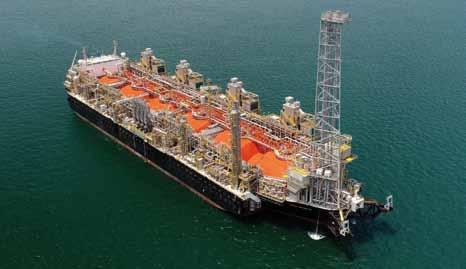
Cameroon FLNG uses a converted LNG tanker the Hilli Episeyo.
In Africa, Cameroon FLNG became the second operational floating liquefaction project when it shipped its first cargo in May 2018. Société Nationale des Hydrocarbures du Cameroun (SNH) and Perenco are the upstream partners developing the Sanaga Sud and Ebome fields, which are 10 km offshore. Golar, Keppel and Black & Veatch are partners in ownership of the FLNG Hilli Episeyo, a converted tanker, which operates on a tolling basis. Production uses two of the vessel’s four trains for an output of 1.2 mtpa.
Two more FLNG projects have got the go-ahead, one in Mozambique and a joint one in Mauritania and Senegal. Both are eyeing first gas in 2022.
FID for Coral Sul 50 km offshore in Area 4 of Mozambique’s Rovuma Basin was reached in June 2017. Eni is the operator with ExxonMobil, CNPC, Galp Energia, KOGAS and Empresa Nacional de Hidrocarbonetos (ENH) as partners. The vessel is being built by a consortium of TechnipFMC, JGC and SHI and will have a capacity of 3 mtpa of LNG and 0.48 mtpa of condensate.
FID for Phase 1 of the Greater Tortue Ahmeyim LNG deepwater offshore development was reached in December 2018. The project will use a floating production, storage and offloading (FPSO) vessel, which will process the gas for onward transfer to an FLNG vessel. This will be anchored behind a breakwater 8 km offshore on the maritime boundary between Mauritania and Senegal. Golar will convert an LNG carrier (most likely Gimi) drawing on the Hilli Episeyo experience to give an initial capacity of 2.4 mtpa in 2022.
A second offshore project in Mozambique is expected to reach FID in the first half of 2019, but in this case the gas will be piped from Area 1 to an onshore liquefaction plant. Mozambique LNG is operated by Anadarko with Mitsui, ONGC, ENH, Bharat PetroResources, PTTEP and Oil India as
partners. The plant is planned for a site at Afungi with an initial capacity of 12.88 mtpa using two trains and startup between 2023 and 2024.
The Coral Sul partners are working on a third project in Mozambique. Rovuma LNG would produce gas from the Mamba fields in Area 4 and liquefy it in a two-train onshore plant in Afungi with a capacity of 15.2 mtpa. Eni is leading the upstream part of the project and ExxonMobil is leading on the LNG plant.
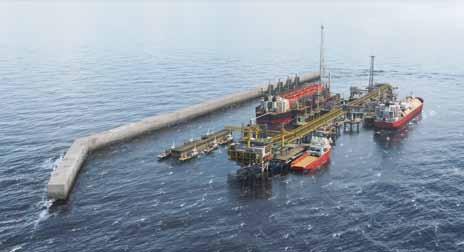
And Nigeria LNG is looking at developing Train 7 to add 8 mtpa of capacity, but this is a muchdelayed project.
Russia
Russia is a growing force in LNG and, in an industry which is no stranger to delays and cost over-runs, the achievement of Novatek and its partners CNPC, Total and the Silk Road Fund in building three trains
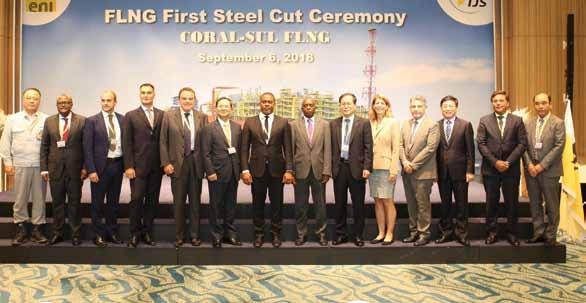
for the Yamal LNG project in a challenging environment and bringing them into operation ahead of schedule and on budget is noteworthy. Yamal shipped its first cargo from Train 1 in December 2017. Train 2 followed in August 2018, six months ahead of the initial schedule, and Train 3 in December, a year early. The plant now has a capacity of 16.5 mtpa which will increase to 17.4 mtpa in 2020 when a smaller fourth train is completed.
While Yamal’s Trains 1-3 use the tried and tested Air Products AP-3CMR process, Train 4 will use Novatek’s new Arctic Cascade process. The company bought licences to develop Linde liquefaction technology in 2017, and patented Arctic Cascade in 2018. Novatek describes it as a two-stage process that capitalises on the colder ambient temperature in the Arctic climate to maximise energy efficiency during the liquefaction process.
z An artist’s impression of the Greater Tortue Ahmeyim LNG export terminal protected by a breakwater, which is due to start up in 2022.
c First steel for the Coral Sul FLNG was cut in September 2018.
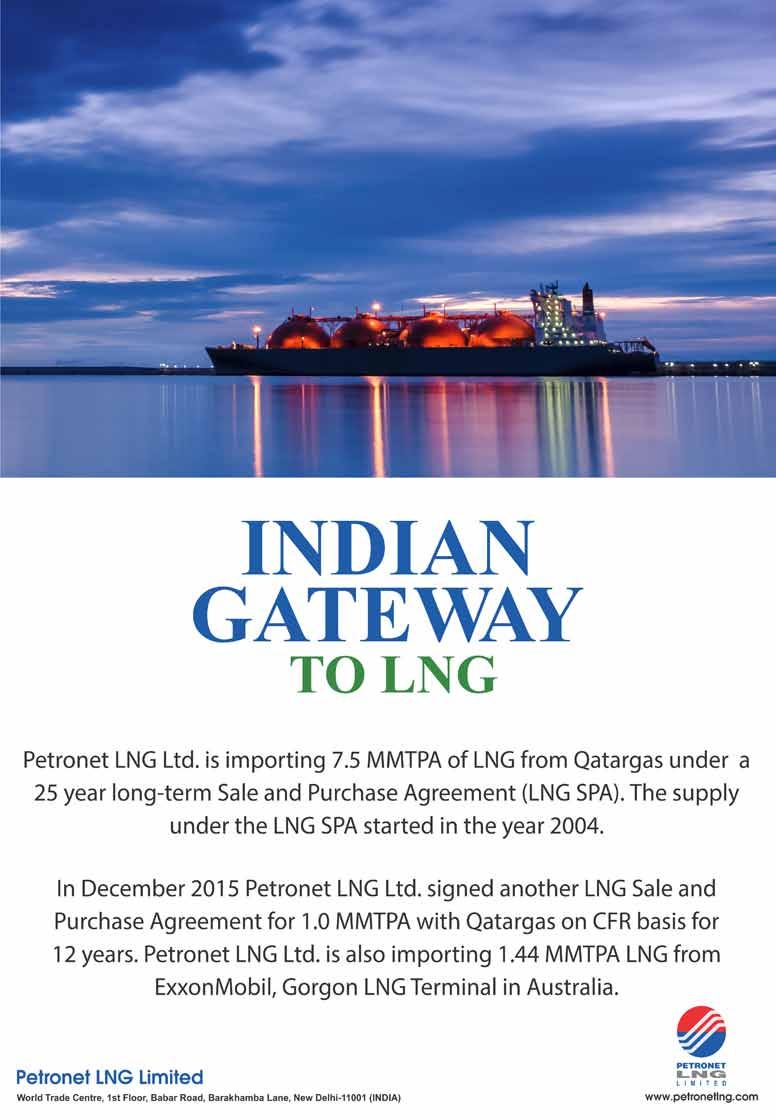
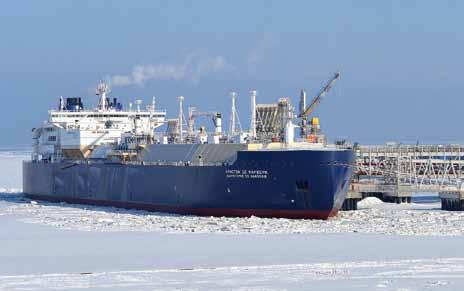
Built to Arc7 ice-class standards, the 172,600 m3 tanker Christophe de Margerie was delivered in 2017 to serve the Yamal LNG project.
Building in Russia will also help to reduce costs.
Novatek’s experience with Yamal is driving the Arctic LNG 2 project, which is lining up for FID later in 2019 and first gas in 2023. Located on the Gydan Peninsula, facing the Yamal Peninsula, Arctic LNG 2 will offer opportunities to develop synergies between the two projects. Using gas resources from the Salmanovskoye field, it will have three 6.6 mtpa trains using Arctic Cascade and be based on gravity-based platforms. Apart from its current Yamal partners, Novatek has been talking to Saudi Arabia about investing in Arctic LNG 2.
Novatek is also planning to build an LNG trans-shipment terminal on Kamchatka Peninsula in the Russian Far East to be completed between 2022 and 2023. The terminal would allow Arctic ice-class tankers to transship LNG onto conventional tankers.
Meanwhile, Novatek and Gazprom have smaller-scale projects due to start up this year.
CryoGas-Vysotsk is a joint venture between Novatek and Gazprombank for a liquefaction plant in the Baltic port of Vysotsk close to the Finnish border. Phase 1 with a capacity of 330,000 tpa was due to start up at presstime supplying LNG for domestic needs and for export to Scandinavian countries. A second phase would double capacity. Gas is supplied to the plant from Russia’s Unified Gas Supply System.
Nearby and expected to start up later in 2019, Gazprom’s Portovaya LNG is a two-train plant with a capacity of 1.5 mtpa. The plant is close to the Portovaya compressor station for the Nord Stream pipeline. To speed up development an LNG tanker (the Excel) has been converted into an FSU.
For the longer term, Gazprom is still considering a third train at Sakhalin 2, although a go-ahead has been pushed back due to gas supply concerns, and is working with its Sakhalin 2 partners, Shell and Mitsui on the Baltic LNG project for a 10 mtpa plant in the port of Ust-Luga, to the west of St Petersburg. A joint design concept is currently being developed.
Latin America
Colombia was originally expected to host the first operational floating liquefaction project but it was cancelled and the purpose-built barge commissioned by Exmar, Caribbean FLNG was laid up. Now it has found a home in Argentina with YPF. The renamed Tango FLNG arrived in Bahía Blanca in February under a 10-year tolling agreement and operations were due to start at presstime to liquefy gas from Argentina’s Vaca Muerta shale play. Tango FLNG has a capacity of 0.5 mtpa and the main exports will be in Argentina’s summer when domestic gas demand falls.
A larger onshore plant in Bahía Blanca is being studied by Excelerate Energy and Transportadora de Gas del Sur.
North America
This is a big year for the US LNG industry with capacity more than doubling. The start-up of Cameron LNG’s three trains, Train 2 of Corpus Christi LNG, Train 1 of Freeport LNG, Train 5 of Sabine Pass and Trains 1-10 of Elba Island will add 30.1 mtpa to the 27.75 mtpa in operation at the end of 2018.
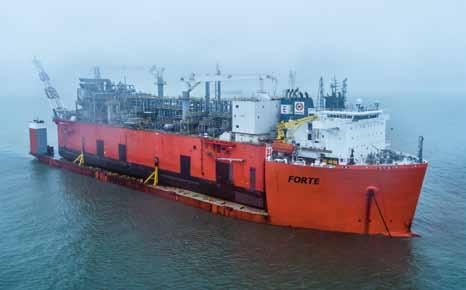
Exmar’s Tango FLNG barge being transported to Argentina, where it entered service with YPF in Bahía Blanca in February.
Moreover, many projects are looking to reach FID in 2019 with the first goahead being given in February for Golden Pass in Sabine Pass, Texas. The Qatar Petroleum and ExxonMobil project will add three 5.2 mtpa liquefaction trains to the existing regasification plant with exports due to start in 2024. Two other projects pretty certain to reach FID are Cheniere’s 4.5 mtpa Train 6 at Sabine Pass and Freeport LNG’s 5.1 mtpa Train 4.
Attention on this year’s start-ups will be particularly focused on Elba Island LNG in Georgia, owned by Kinder Morgan and EIG Global Energy Par
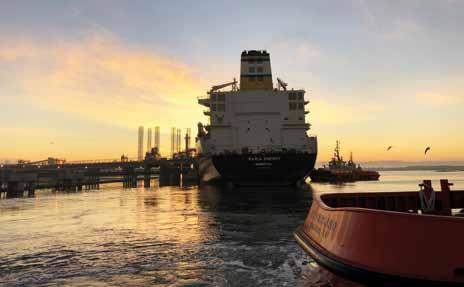
The first commissioning cargo from Train 1 of Cheniere Energy’s Corpus Christi LNG plant was shipped aboard the Maria Energy in December 2018. tners, to see how its modular system of a series of small trains performs. The plant has 10 0.25 mtpa trains using Shell’s moveable modular liquefaction system. Several other companies are looking at modular systems as a way of reducing costs because they can be assembled in the controlled environment of a fabrication yard and then installed rapidly on site.
Venture Global is using a process solution from Baker Hughes, a GE company (BHGE) for two projects in Louisiana. Calcasieu Pass LNG is based on nine blocks each of two trains with a total nameplate capacity of 10 mtpa. Plaquemines LNG will have nine blocks in its first phase and nine more in phase two for a total of 20 mtpa. If FID for Calcasieu Pass is reached in 2019, start-up would be possible in 2022.
Tellurian is planning up to 20 1.38 mtpa trains at its Driftwood project near Lake Charles in Louisiana using Chart Industries’ integrated precooled SMR process and GE refrigeration compressors. FID is targeted in the first half of 2019 with start-up of the first eight trains in 2023.
Eagle LNG is targeting FID in the second half of 2019 for a three-train, 1 mtpa plant in Jacksonville, Florida to serve domestic and international markets from 2021.
Perth, Australia-based LNG Ltd is looking at FID in the first half of 2019 for its Magnolia project in Louisiana with four 2 mtpa trains.
Cheniere, which up to now has standardised on 4.5 mtpa trains, is
looking at seven 1.36 mtpa trains to expand Corpus Christi in the longer term.
Other projects looking at FID in 2019 are NextDecade Corporation’s Rio Grande LNG in Brownsville, Texas, Sempra Energy’s Port Arthur LNG in Jefferson County, Texas and Sempra Energy’s Energía Costa Azul LNG near Ensenada in Mexico which will be supplied with US gas.
Rio Grande is planned for a maximum capacity of 27 mtpa with six trains. FID for the first three trains (13.5 mtpa) is expected in the third quarter of 2019, with commercial operations targeted to begin in 2023.
Sempra Energy’s Port Arthur project is for a two-train plant with a capacity of 11 mtpa, while its Costa Azul project involves the addition of liquefaction capacity to the existing regasification terminal. The first phase is for a single train of 2.4 mtpa. Both are eyeing startup in 2023. If it gets the go-ahead this year Costa Azul is likely to be the first of the current wave of North American export projects to start up on the Pacific coast with shorter sailing times to Asian markets.
LNG Canada, the country’s first export project, is also being built on the Pacific Coast with a possible startup in 2024. The initial go-ahead from partners Petronas, Shell, PetroChina, Mitsubishi and KOGAS was for a twotrain plant in Kitimat, British Columbia with a capacity of 14 mtpa. Two further trains adding 14 mtpa could be built in the future. TransCanada is building a 670 km pipeline to transport gas from the Montney formation.
Targeting FID in 2019 are two other Canadian projects with possible startup in 2024. Woodfibre LNG, backed by the Singapore-based RGE group, is a 2.1 mtpa project based north of Vancouver. In the east of the country, Goldoboro LNG in Nova Scotia would offer shorter sailing times than the US Gulf of Mexico projects to markets in north-west Europe. Backed by Pieridae Energy, the plan is for a two-train plant with a capacity of 9.6 mtpa. Uniper has signed up to take half the output of which 1.5 mtpa would be shipped to the Gate terminal in Rotterdam for regasification and onward supply to Germany.
Clearly not all the projects looking at FID this year are going to make it. Apart from the 15.6 mtpa confirmed at Golden Pass another 124 mt is in play. If only a third of this gets the go-ahead, 2019 would end with a very respectable 57 mt of new capacity confirmed. The presentations and debates during LNG2019 should give us a clearer picture of how the year will pan out.
Looking ahead
The FID drought following LNG18 means that after a bumper 2019 just over 30 mtpa of capacity is expected to enter service between 2020 and 2022 so delegates to LNG2022 in St Petersburg are likely to be experiencing a tight market. This will ease in 2023 and 2024 as the wave of projects sanctioned at the end of 2018 and in 2019 start coming onstream.
Mark Blacklock is the Consulting Editor of International Systems & Communications Ltd.
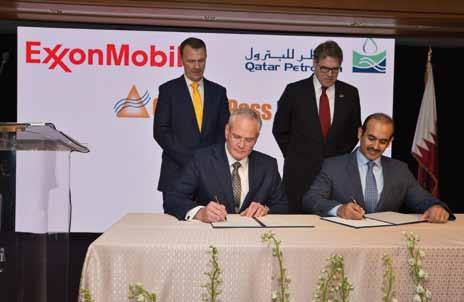
Golden Pass was the first US LNG export project to reach FID in 2019. Darren Woods, Chairman & CEO of ExxonMobil and HE Saad Sherida Al-Kaabi, Minister of State for Energy Affairs and Qatar Petroleum President & CEO sign as Golden Pass President Sean Ryan (left) and US Department of Energy Secretary Rick Perry (right) look on.
Bringing High Reliability to Small-Scale LNG Processes: The 27 MW Mixed Refrigeration Compressor from Atlas Copco Gas and Process
When it comes to LNG, availability and efficiency are essential – cost efficiency, operational efficiency and energy efficiency with maximum availability. Any one of these factors can make or break a small-scale LNG (SSLNG) plant.
With a focus on these objectives, Atlas Copco Gas and Process has for more than four decades consistently developed solutions that improve efficiency for every aspect of process gas applications. Each compressor and expander in the company’s wide-ranging portfolio is designed to help both EPCs and operators handle the strategic and operational pressures they face every day.
To that end, the company’s integrallygeared mixed refrigerant compressor (MRC) solution marks a true breakthrough for SSLNG. Used in an LNG plant with 2 Million Nm³/d capacity, the 27 MW Atlas Copco Gas and Process MRC is the world’s biggest integrallygeared centrifugal mixed refrigerant compressor, with the smallest footprint among compressors of its kind. The 27 MW MRC is highly engineered to bring unrivaled efficiency to single mixed refrigerant (SMR) processes – and it’s the first in the world to do so at such a small size.
Integral gearing makes all the difference. Integrally-geared compressors can support up to eight stages mounted on a single gearbox, shrinking the overall footprint while boosting reliability. The smarter design of the Atlas Copco integrally-geared compressor ensures that the individual compressor stages are running at optimal speed for better efficiency, with lower seal leakage rates than an inline compressor. High-speed rotors are supported by radial tilting pad bearings that eliminate virtually all vibration for optimal stability and smooth rotation.
The result is that the MRC’s rotors are designed to keep secure ongoing production, delivering 99.8% reliability and excellent efficiency and stability for SMR processes. Improved process control enhancements, as well as stage intercooling, help to reduce operational cost by achieving more than 84% overall compressor efficiency.
Cus tom isabl e for sp ec ific
appl ica tion
n eeds
The MRC can be tailored to the precise needs of plant processes. Atlas Copco Gas and Process engineers have designed, built, delivered and maintained more than 8,000 turbomachines, and they apply that expertise to design solutions that reflect all key process needs.
Our design engineers can help determine whether open or closed impellers are right for the process needs, and then select the best seals for your application – whether dry gas, floating carbon ring, or labyrinth seals in single, double, or tandem arrangements. In fact, Atlas Copco Gas and Process was the first compressor manufacturer to implement dry gas seals on integrally-geared compressors to pack maximum efficiency, high machine availability and superb process control into a small footprint.
Atlas Copco Gas and Process offers the shop testing to ensure optimal performance and reliability that won’t let you down.
Effic ienc ies at ever y phas
e
The MRC is built for flexible plant design, with design efficiencies like customised aerodynamics and a low-leakage seal design that help reduce both initial investment and
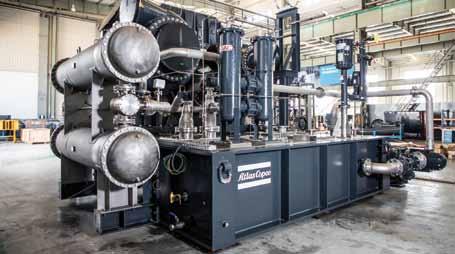
ongoing operating costs. Also, the MRC’s skid-based modularity speeds up installation and commissioning.
The operational efficiencies provided by intercooling technology and inlet guide vanes (IGVs) allow operators to make full use of agile plant deployment. Intercooling helps reduce the energy required for multi-stage compression, while IGVs help regulate inlet flow to provide more accurate process control and deliver a constant discharge pressure. IGVs are standard with all Atlas Copco compressors, and they increase compressor efficiency by 9% compared to other inlet assemblies.
Variable IGVs also offer a wide operating range and excellent partial-load performance over a wide range of conditions. When combined with the efficiency gains inherent to the compressor’s multi-section design, these enhancements also promote significant energy savings.
Han dl ing the pr essur
e in LNG
Over the last four years, Atlas Copco Gas and Process has helped a variety of projects with its groundbreaking compressor. But its MRC is just one example of the company’s many innovative solutions. Around the globe, Atlas Copco Gas and Process compressors and expanders support some of the LNG industry’s most critical applications throughout the value chain.










